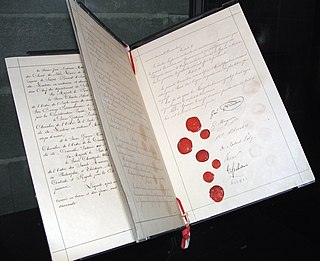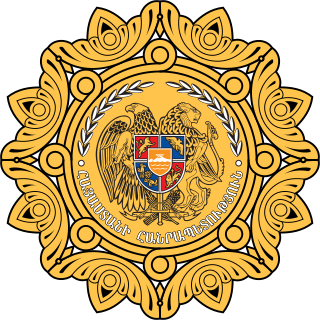The Armed Forces Law Association of New Zealand was formed in 2000 by lawyers in the military justice system, and those with a professional interest in the law of the armed forces of the Crown, and of the law of armed conflict.
The Armed Forces Law Association of New Zealand was formed in 2000 by lawyers in the military justice system, and those with a professional interest in the law of the armed forces of the Crown, and of the law of armed conflict.

The Indonesian National Armed Forces are the military forces of the Republic of Indonesia. It consists of the Army (TNI-AD), Navy (TNI-AL), and Air Force (TNI-AU). The President of Indonesia is the commander-in-chief of the Armed Forces. As of 2023, it comprises approximately 400,000 military personnel including the Indonesian Marine Corps, which is a branch of the Navy.

The Armed Forces of the Russian Federation, commonly referred to as the Russian Armed Forces, are the military of Russia. It is organized into three service branches—the Ground Forces, Navy, and Aerospace Forces—two independent combat arms, and the Special Operations Forces Command.
A court-martial or court martial is a military court or a trial conducted in such a court. A court-martial is empowered to determine the guilt of members of the armed forces subject to military law, and, if the defendant is found guilty, to decide upon punishment. In addition, courts-martial may be used to try prisoners of war for war crimes. The Geneva Conventions require that POWs who are on trial for war crimes be subject to the same procedures as would be the holding military's own forces. Finally, courts-martial can be convened for other purposes, such as dealing with violations of martial law, and can involve civilian defendants.
A civilian is a person not a member of an armed force nor a person engaged in hostilities.

Combatant is the legal status of a person entitled to directly participate in hostilities during an armed conflict, and may be intentionally targeted by an adverse party for their participation in the armed conflict. Combatants are not afforded immunity from being directly targeted in situations of armed conflict and can be attacked regardless of the specific circumstances simply due to their status, so as to deprive their side of their support.

A paramilitary is a military that is not part of a country's official or legitimate armed forces. The Oxford English Dictionary traces the use of the term "paramilitary" as far back as 1934.
Military justice is the body of laws and procedures governing members of the armed forces. Many nation-states have separate and distinct bodies of law that govern the conduct of members of their armed forces. Some states use special judicial and other arrangements to enforce those laws, while others use civilian judicial systems. Legal issues unique to military justice include the preservation of good order and discipline, the legality of orders, and appropriate conduct for members of the military. Some states enable their military justice systems to deal with civil offenses committed by their armed forces in some circumstances.

A commander-in-chief or supreme commander is the person who exercises supreme command and control over an armed force or a military branch. As a technical term, it refers to military competencies that reside in a country's executive leadership, a head of state, head of government, or other designated government official.

Military police (MP) are law enforcement agencies connected with, or part of, the military of a state. In wartime operations, the military police may support the main fighting force with force protection, convoy security, screening, rear reconnaissance, logistic traffic management, counterinsurgency, and detainee handling.

A gendarmerie is a military force with law enforcement duties among the civilian population. The term gendarme is derived from the medieval French expression gens d'armes, which translates to "men-at-arms". In France and some Francophone nations, the gendarmerie is a branch of the armed forces that is responsible for internal security in parts of the territory, with additional duties as military police for the armed forces. It was introduced to several other Western European countries during the Napoleonic conquests. In the mid-twentieth century, a number of former French mandates and colonial possessions adopted a gendarmerie after independence. A similar concept exists in Eastern Europe in the form of internal troops, which are present in many countries of the former Soviet Union and its former allied countries.
Active duty, in contrast to reserve duty, is a full-time occupation as part of a military force.

Military organization (AE) or military organisation (BE) is the structuring of the armed forces of a state so as to offer such military capability as a national defense policy may require. Formal military organization tends to use hierarchical forms.

The Vietnam People's Armed Forces are the armed uniformed services and national security forces of the Socialist Republic of Vietnam. Being placed under the political leadership of the sole-ruling Communist Party of Vietnam and theoretically under the supreme command of the President of Vietnam, it consists of three components: the People's Army of Vietnam which is the military of Vietnam, Vietnam People's Public Security which is the law enforcement agency of Vietnam and Vietnam Militia and Self-Defence Force which is the militia of Vietnam.
The Military ranks of the Republic of China are the ranks used by the Republic of China Armed Forces. The official military rank names in Traditional Chinese are identical across all different military branches, but their English translations may be different.

Combat is a purposeful violent conflict between multiple combatants with the intent to harm the opposition. Combat may be armed or unarmed. Combat is resorted to either as a method of self-defense or to impose one's will upon others. An instance of combat can be a standalone confrontation or part of a wider conflict, and its scale can range from a fight between individuals to a war between organized groups. Combat may also be benign and recreational, as in the cases of combat sports and mock combat.

The Geneva Conventions are international humanitarian laws consisting of four treaties and three additional protocols that establish international legal standards for humanitarian treatment in war. The singular term Geneva Convention colloquially denotes the agreements of 1949, negotiated in the aftermath of the Second World War (1939–1945), which updated the terms of the two 1929 treaties and added two new conventions. The Geneva Conventions extensively define the basic rights of wartime prisoners, civilians and military personnel; establish protections for the wounded and sick; and provide protections for the civilians in and around a war-zone.
The reserve components of the United States Armed Forces are military organizations whose members generally perform a minimum of 39 days of military duty per year and who augment the active duty military when necessary. The reserve components are also referred to collectively as the National Guard and Reserve.

The president of Armenia is the head of state and the guarantor of independence and territorial integrity of Armenia elected to a single seven-year term by the National Assembly of Armenia. Under Armenia's parliamentary system, the president is simply a figurehead and holds ceremonial duties, with most of the political power vested in the parliament and prime minister.

The Armed Forces of Ukraine are the military forces of Ukraine. All military and security forces, including the Armed Forces, are under the command of the President of Ukraine and subject to oversight by a permanent Verkhovna Rada parliamentary commission. They trace their lineage to 1917, while the modern armed forces were formed after Ukrainian independence in 1991. As of 2024, it is the sixth largest and one of the best-funded armed forces in the world. The Ukrainian Armed Forces also operates one of the largest and most diverse drone fleet in the world. The Ukrainian Armed Forces is one of the most battle-hardened armed forces in the world.

The Commander of the Indonesian National Armed Forces is the professional head and highest-ranking officer of the Indonesian National Armed Forces. Directly answerable to the president of Indonesia, the position is held by any four-star officer who previously served as Chief of Staff of the Indonesian Army (KSAD), Chief of Staff of the Indonesian Navy (KSAL) or Chief of Staff of the Indonesian Air Force (KSAU).